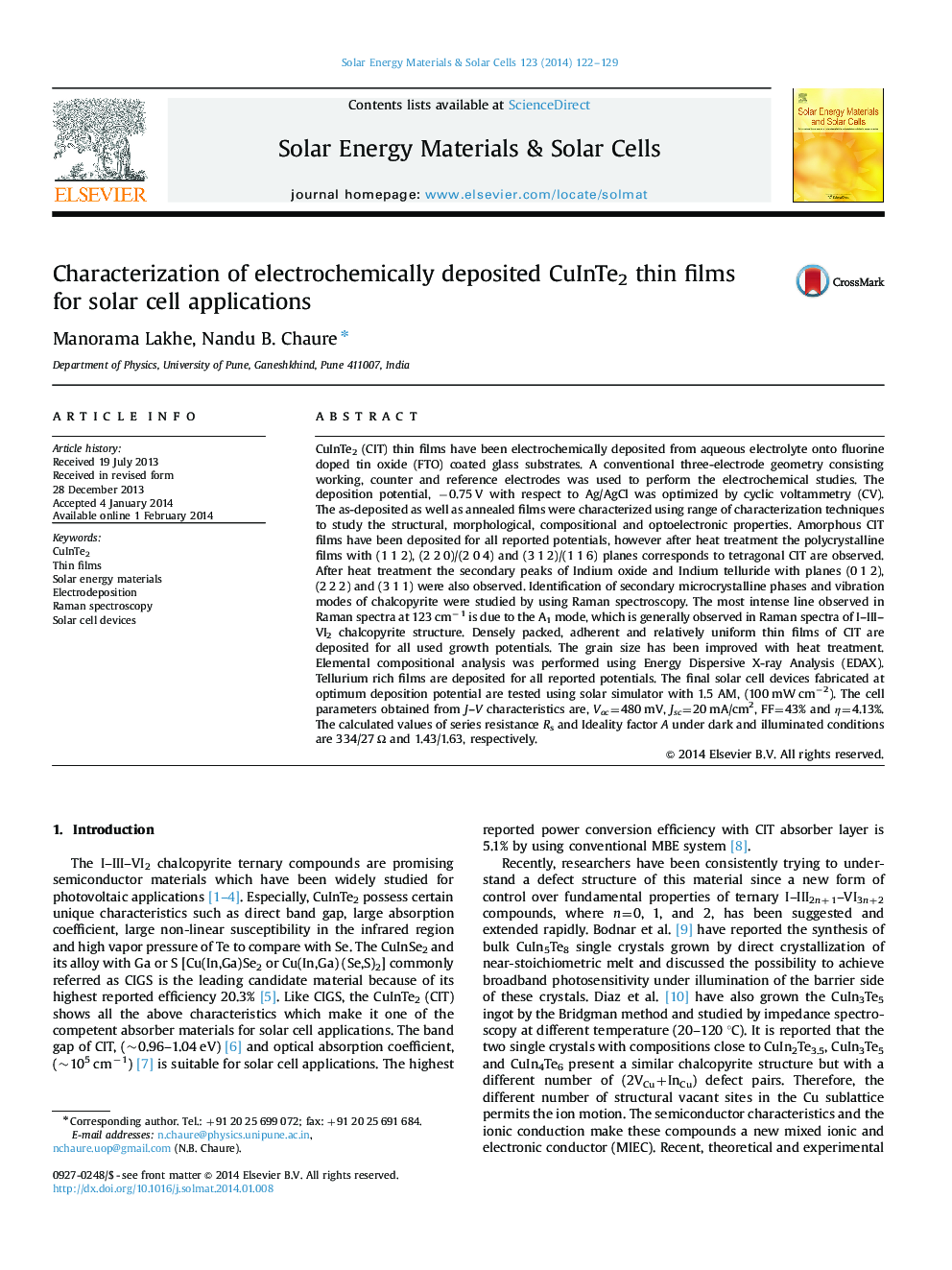| کد مقاله | کد نشریه | سال انتشار | مقاله انگلیسی | نسخه تمام متن |
|---|---|---|---|---|
| 78054 | 49315 | 2014 | 8 صفحه PDF | دانلود رایگان |

• Cyclic voltammetry is a unique technique to optimize the electrodeposition potential.
• Growth potential plays a very important role to control the stoichiometry of CuInTe2 thin films prepared by electrodeposition technique.
• The post deposition heat treatment procedure is essential to obtain the crystalline chalcopyrite structure of CuInTe2 thin films.
• The surface morphology of CuInTe2 thin films also depends on the electrodeposition potential.
• We report the importance of heat and surface treatment of solar cells to produce high efficiency devices.
CuInTe2 (CIT) thin films have been electrochemically deposited from aqueous electrolyte onto fluorine doped tin oxide (FTO) coated glass substrates. A conventional three-electrode geometry consisting working, counter and reference electrodes was used to perform the electrochemical studies. The deposition potential, −0.75 V with respect to Ag/AgCl was optimized by cyclic voltammetry (CV). The as-deposited as well as annealed films were characterized using range of characterization techniques to study the structural, morphological, compositional and optoelectronic properties. Amorphous CIT films have been deposited for all reported potentials, however after heat treatment the polycrystalline films with (1 1 2), (2 2 0)/(2 0 4) and (3 1 2)/(1 1 6) planes corresponds to tetragonal CIT are observed. After heat treatment the secondary peaks of Indium oxide and Indium telluride with planes (0 1 2), (2 2 2) and (3 1 1) were also observed. Identification of secondary microcrystalline phases and vibration modes of chalcopyrite were studied by using Raman spectroscopy. The most intense line observed in Raman spectra at 123 cm−1 is due to the A1 mode, which is generally observed in Raman spectra of I–III–VI2 chalcopyrite structure. Densely packed, adherent and relatively uniform thin films of CIT are deposited for all used growth potentials. The grain size has been improved with heat treatment. Elemental compositional analysis was performed using Energy Dispersive X-ray Analysis (EDAX). Tellurium rich films are deposited for all reported potentials. The final solar cell devices fabricated at optimum deposition potential are tested using solar simulator with 1.5 AM, (100 mW cm−2). The cell parameters obtained from J–V characteristics are, Voc=480 mV, Jsc=20 mA/cm2, FF=43% and η=4.13%. The calculated values of series resistance Rs and Ideality factor A under dark and illuminated conditions are 334/27 Ω and 1.43/1.63, respectively.
(A) Current density–Voltage (J–V) characteristics and (B) Raman analyses of FTO/CdS/CIT/Au heterojunction solar cells.Figure optionsDownload as PowerPoint slide
Journal: Solar Energy Materials and Solar Cells - Volume 123, April 2014, Pages 122–129